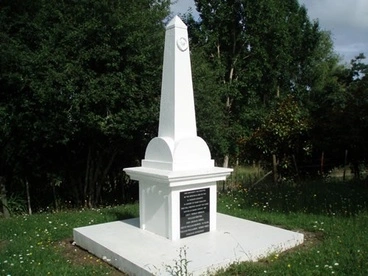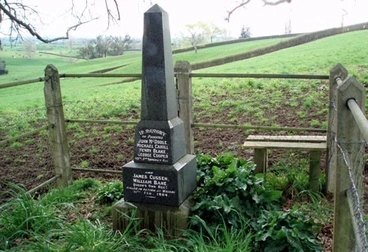War in the Waikato ( 1863 - 1865)
A DigitalNZ Story by Janice
A series of images, articles, videos on the Waikato War fought between 1863 and 1864.
New Zealand Wars, Waikato War, Land Wars, New Zealand Land Wars
WAIKATO WAR: BEGINNINGS
The Waikato was the home of the Māori king. Pōtatau Te Wherowhero had been proclaimed the first king in 1858, and in 1860 he was succeeded by Tāwhiao. Some of the king’s followers had participated in the Taranaki war. The government was keen to punish them, despite the truce in Taranaki, and to satisfy European land ambitions in the Waikato region.
Source: Danny Keenan, 'New Zealand wars - Waikato war: beginnings', Te Ara - the Encyclopedia of New Zealand, http://www.TeAra.govt.nz/en/new-zealand-wars/page-5(accessed 16 July 2019)
Map of the seat of war
Auckland Libraries
Confiscated territory after the Maori Wars, in the Waikato, 1864
Archives New Zealand Te Rua Mahara o te Kāwanatanga
Māori leaders in the Waikato war
King Tāwhiao
Manatū Taonga, the Ministry for Culture and Heritage
Wiremu Tāmihana
Auckland Art Gallery Toi o Tāmaki
Rewi Maniapoto
Manatū Taonga, the Ministry for Culture and Heritage
Pakeha leaders in the Waikato war
Governor Sir George Grey
Auckland Art Gallery Toi o Tāmaki
Meremere Pā - August 1863
On 12 August 1863 the gunboat Avon fired on Meremere, then slipped past to conduct reconnaissance. The Pioneer followed, exchanging fire with concealed riflemen. On 31 October, 600 men from the 40th and 65th regiments were towed past the pā on barges and landed 8 kilometres upriver, beating off an attack from the pā. With the British now at their rear, Waikato abandoned Meremere.
Source: Danny Keenan, 'New Zealand wars - Waikato war: beginnings', Te Ara - the Encyclopedia of New Zealand, http://www.TeAra.govt.nz/en/new-zealand-wars/page-5 (accessed 16 July 2019)
Gunboat on the Waikato River
Manatū Taonga, the Ministry for Culture and Heritage
Rangiriri Pa - November 1863
On 20 November 1863 the British army assembled a land force of 850 men with three field guns supported by cannon aboard the Pioneer and Avon. Following a two-hour bombardment, Lieutenant General Duncan Cameron launched a frontal assault upon the pā.
Source: Danny Keenan, 'New Zealand wars - Waikato war: major battles', Te Ara - the Encyclopedia of New Zealand, http://www.TeAra.govt.nz/en/new-zealand-wars/page-6 (accessed 16 July 2019)
Māori entrenchments at Rangiriri
Manatū Taonga, the Ministry for Culture and Heritage
Attack on Rangiriri
Manatū Taonga, the Ministry for Culture and Heritage
Rangiriri trenches
Manatū Taonga, the Ministry for Culture and Heritage
Rangiriri pā - roadside stories
Manatū Taonga, the Ministry for Culture and Heritage
Redmayne, Thomas, fl 1880s-1890s :Attack on the Maori Pah at Rangiriri. [1863]
Alexander Turnbull Library
Rangiriri Pā returned after 1863 invasion
Radio New Zealand
Pāterangi Pā - January 1864
Cameron occupied the Māori King’s village at Ngāruawāhia on 8 December 1863, and moved 3,000 men south of the settlement in January 1864. Mindful of the need to defend villages and sources of supply, Kīngitanga forces began constructing a massive line of fortifications centred upon Pāterangi pā.
Source: Danny Keenan, 'New Zealand wars - Waikato war: major battles', Te Ara - the Encyclopedia of New Zealand, http://www.TeAra.govt.nz/en/new-zealand-wars/page-6 (accessed 16 July 2019)
Rangiaowhia - February 1864
On 21 February 1864 a combined force comprising British regular infantry and two colonial units, Captain Gustavus von Tempsky’s Forest Rangers and Colonel Marmaduke Nixon’s Cavalry, attacked Rangiaowhia after dawn.
Source: Danny Keenan, 'New Zealand wars - Waikato war: major battles', Te Ara - the Encyclopedia of New Zealand, http://www.TeAra.govt.nz/en/new-zealand-wars/page-6 (accessed 16 July 2019)
The fight at Rangiaowhia, 1864
Auckland Libraries
Ōrākau Pā- March 1864
Seventeen Europeans and up to 160 Māori were killed during the Ōrākau engagement, most during the escape. It was the greatest loss of life in one battle of the wars. Whilst the battle represented a clear victory for the British, it involved only a fraction of the Māori King’s forces.
Source: Danny Keenan, 'New Zealand wars - Waikato war: major battles', Te Ara - the Encyclopedia of New Zealand, http://www.TeAra.govt.nz/en/new-zealand-wars/page-6 (accessed 16 July 2019)
Ake! Ake! Ake! Rewi defying the British troops at Orakau.
University of Otago
[Eastwood, Charles], 1848-1868 :Roman Catholic Chapel Rangawahia where the skirmish took place. [1864].
Alexander Turnbull Library
STORMING OF THE ORAKAU PA. (Hawke's Bay Herald, 08 April 1864)
National Library of New Zealand
THE SIEGE OF ORAKAU. (Daily Southern Cross, 11 April 1864)
National Library of New Zealand
BATTLE OF ORAKAU. (Taranaki Herald, 16 April 1864)
National Library of New Zealand
Māori memorials
Pakeha Memorials
Waikato Regiment NZ Wars memorial, Drury
Manatū Taonga, the Ministry for Culture and Heritage
The Waikato War Today
Land War confiscations still raw today
Radio New Zealand
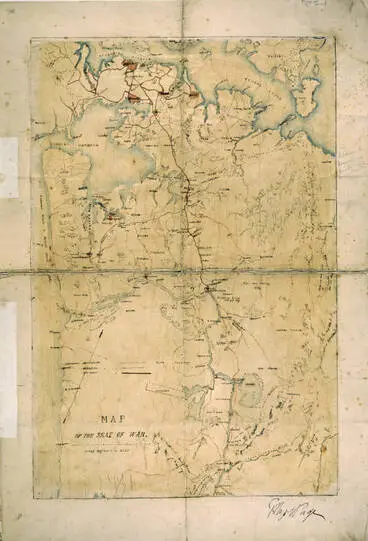
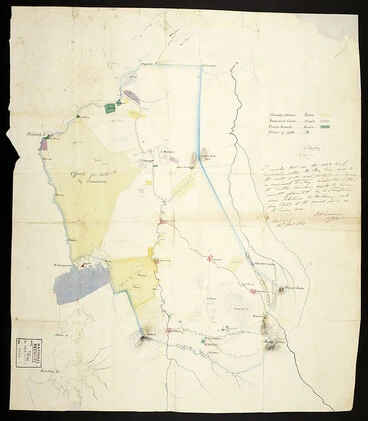

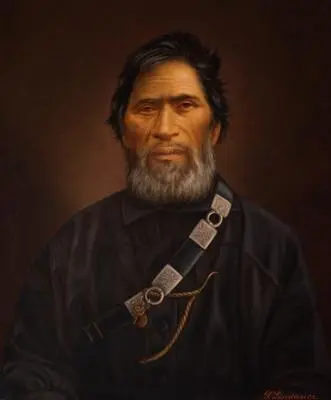
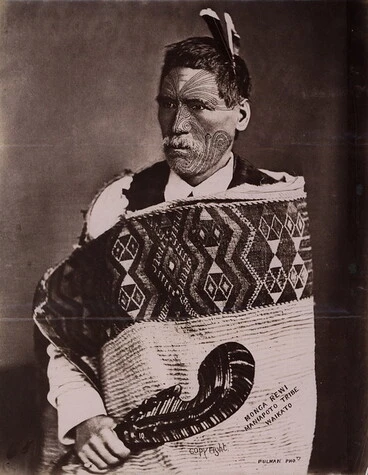
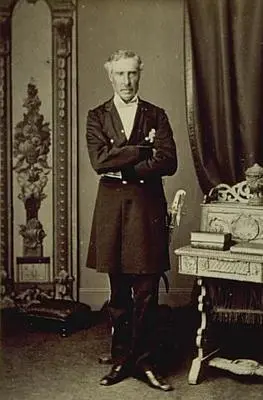

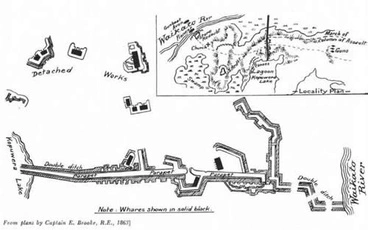


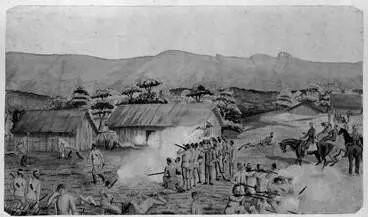
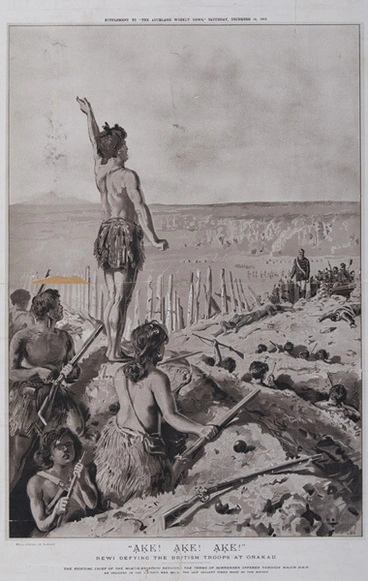
![Plan of ground surrounding Orakau Pa, shewing the disposition of the troops under Brigadier General Carey, 2nd April 1864 [and] Plan of Pa [by] Robert S. Anderson 8th July 1864 Image: Plan of ground surrounding Orakau Pa, shewing the disposition of the troops under Brigadier General Carey, 2nd April 1864 [and] Plan of Pa [by] Robert S. Anderson 8th July 1864](https://thumbnailer.digitalnz.org/?resize=770x&src=https%3A%2F%2Fkura.aucklandlibraries.govt.nz%2Fdigital%2Fapi%2Fsingleitem%2Fimage%2Fmaps%2F814%2Fdefault.jpg&resize=368%253E)
